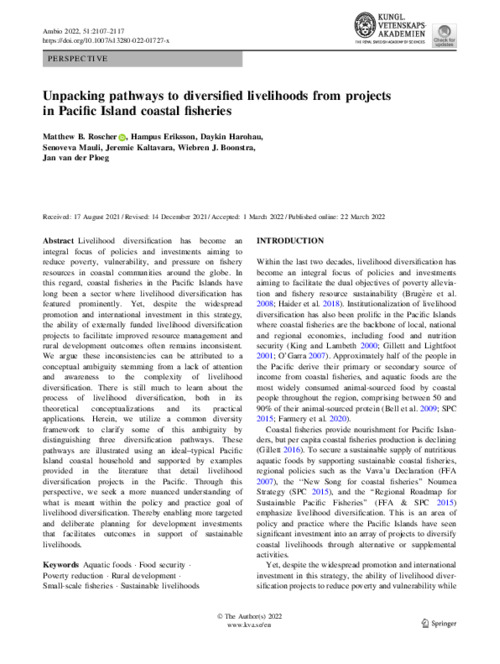Unpacking pathways to diversified livelihoods from projects in Pacific Island coastal fisheries

Livelihood diversification has become an integral focus of policies and investments aiming to reduce poverty, vulnerability, and pressure on fishery resources in coastal communities around the globe. In this regard, coastal fisheries in the Pacific Islands have long been a sector where livelihood diversification has featured prominently. Yet, despite the widespread promotion and international investment in this strategy, the ability of externally funded livelihood diversification projects to facilitate improved resource management and rural development outcomes often remains inconsistent. We argue these inconsistencies can be attributed to a conceptual ambiguity stemming from a lack of attention and awareness to the complexity of livelihood diversification. There is still much to learn about the process of livelihood diversification, both in its theoretical conceptualizations and its practical applications. Herein, we utilize a common diversity framework to clarify some of this ambiguity by distinguishing three diversification pathways. These pathways are illustrated using an ideal–typical Pacific Island coastal household and supported by examples provided in the literature that detail livelihood diversification projects in the Pacific. Through this perspective, we seek a more nuanced understanding of what is meant within the policy and practice goal of livelihood diversification. Thereby enabling more targeted and deliberate planning for development investments that facilitates outcomes in support of sustainable livelihoods.
Permalink
Date Available
Type
Publisher
Countries
ISSN
0044-7447,1654-7209
Copyright
CC-BY-4.0
Research Themes
Topics
Language